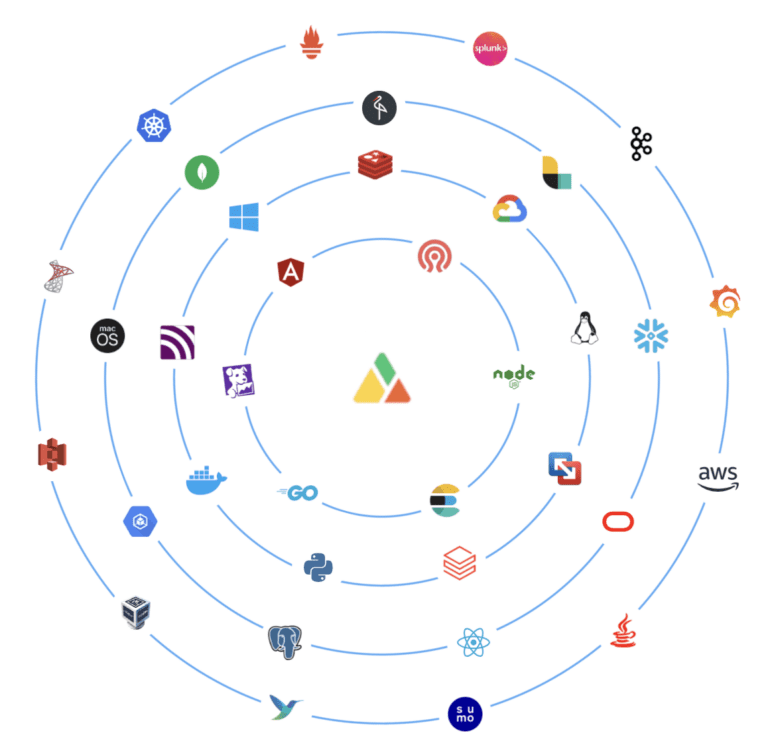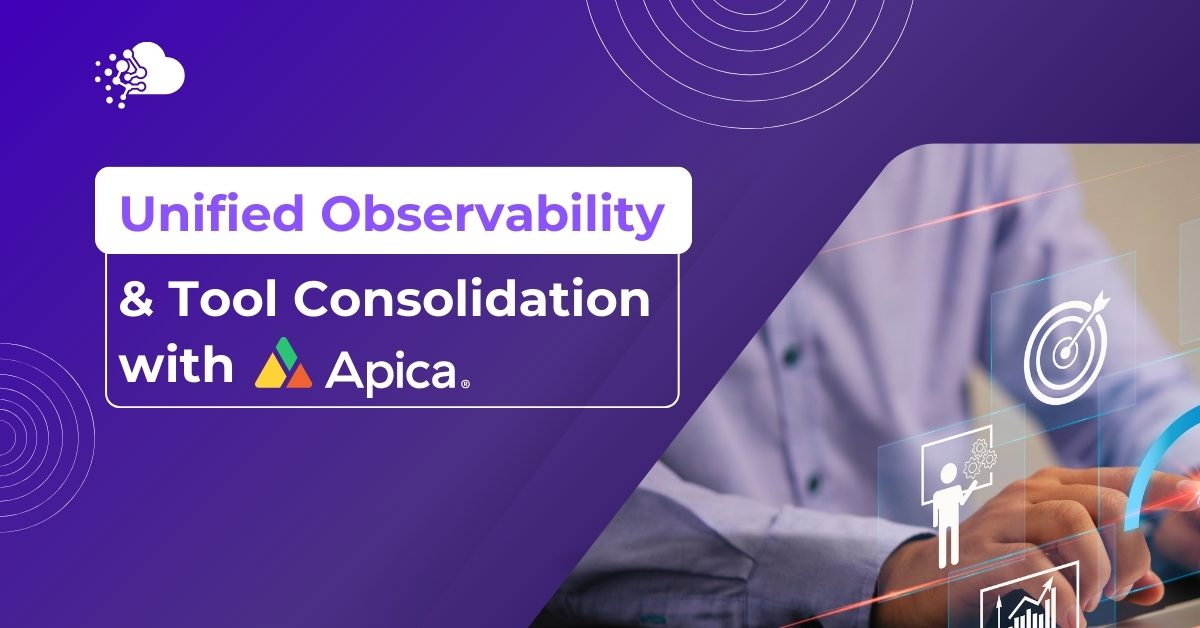Tool Sprawl is real and unified observability is the key to unlocking this hindrance, along with the many others in your IT monitoring.
Some say that the golden era of software development is already gone, and some say that it has just started with the advent of AI. Nevertheless, with the ease of microservices, containerization and open-source adoption, the recent years have certainly become the glory days for SaaS organizations.
But innovation almost always brings with it challenges. As your infrastructure adopts cloud modernization with increased deployment velocity and scale, the complexity of your IT infrastructure proliferates. Consequently, you now have a broader range of challenges including:
- A growing array of monitoring tools, each producing distinct telemetry data.
- Unpredictable expenditure: Licensing fees and operational expenses add to TCO.
- Diverse environments spanning multiple cloud vendors.
- Recurrent software updates
- Increased MTTD and MTTR
In this blog post, we’ll discuss the major challenges in modern IT monitoring, what is “Unified Observability”, and how Apica’s highly integrated platform helps you tackle issues like tool sprawl with our tool consolidation approach.
What is Unified Observability?

Unified observability is a comprehensive approach to monitoring and managing an IT infrastructure that integrates multiple data sources and monitoring tools into a single platform. This approach provides an all-encompassing view of the performance, security, and health of an organization’s applications, infrastructure, and network.
Think of it like a centralized strategy where every aspect of your observability is under one umbrella. Thus, unified observability streamlines the complexities of IT monitoring by providing a single pane of glass view, that enhances insights from metrics, events, logs, and traces.
This concept is particularly important in environments where OTel is used at scale, as it helps ensure that all telemetry agents or collectors are functioning correctly, are up to date, and are properly configured.
Benefits of Unified Observability
Unified observability addresses monitoring challenges by consolidating disparate monitoring tools into a single, integrated platform. This approach provides several key benefits, including:
- Enhanced Visibility: Unified observability offers a comprehensive view of the IT environment, enabling teams to see all relevant data in one place and gain better insights into system behavior and performance
- Cost Efficiency: Reducing the number of tools and integrating their functionalities leads to more predictable expenditure. Thus, organizations can lower licensing fees and operational costs.
- Better Performance: Consolidating tools into a unified platform minimizes the complexity and overhead associated with managing multiple systems, leading to faster and more effective troubleshooting and decision-making.
- Streamlined Operations: A unified observability strategy simplifies the IT environment, making it easier for teams to maintain, upgrade, and secure the system. This consolidation also supports better collaboration across different teams and departments.
What is Tool Consolidation?
Tool consolidation in the context of observability refers to the process of integrating several monitoring and analysis tools into a single, unified platform. This approach aims to reduce redundancy, simplify management, and enhance the efficiency of data collection and analysis by providing a comprehensive view of system performance from a centralized interface.
Tool consolidation is not just about evaluating and determining which IT observability tools should be utilized or added, but also figuring out which ones are redundant or phased out.
Tool Consolidation VS Unified Observability
Tool consolidation involves integrating multiple monitoring and observability tools into a single platform to reduce complexity and streamline workflows. It focuses on merging functionalities and interfaces of different tools to improve efficiency and reduce overhead.
Unified observability, on the other hand, goes beyond mere consolidation by offering a cohesive approach to monitoring. It provides a singular, user-friendly interface that not only merges tools but also enhances the overall visibility and correlation of metrics, logs, and traces, facilitating enhanced insights and faster troubleshooting.
In summary, tool consolidation simplifies tool management, while unified observability enhances the overall monitoring experience by integrating and enriching the data insights.
Unified Observability with APICA

The Apica platform offers comprehensive support for both inbound and outbound integrations, enabling seamless connectivity across diverse environments.
Key Features
Versatile Integration Capabilities
- Data Source Integration: Connect with any data source and enable notifications for any service.
- Custom Authentication and Automation: Utilize customizable authentication methods and automate processes efficiently.
Cross-Environment Compatibility
- Legacy and Cloud-Native Integration: Apica bridges traditional physical servers with modern cloud-native compute models, including Serverless architectures, ensuring comprehensive data collection and observability pipeline control.
Simplified Complexity and Universal Deployment
- Out-of-the-Box Integrations: Supports integration with log agents, API gateways, databases, cloud platforms, applications, and standardized protocols.
- Enhanced Toolchain Integration: Apica can be incorporated into existing toolchains without code modifications, optimizing data utilization and reducing complexity.
Flexible Data Storage
- S3-Compatible Storage: Log and store data indefinitely using any S3-compatible storage solution, facilitating limitless scaling and data retention. Apica partitions and stores incoming log data as objects within your storage infrastructure.
Agentless Operation
- Support for Open-Source Agents: Apica operates without proprietary log agents, supporting a range of free and open-source logging drivers on platforms such as Docker and Amazon ECS.
Effortless Log Transport
- Secure Log Transmission: Supports RELP and MQTT transports for secure log shipment from diverse data sources. Connect using Syslog and/or Rsyslog protocols for streamlined log transport.
IaaS Infrastructure Monitoring
- Kubernetes and OpenStack Integration: Integrate Kubernetes and OpenStack log streams with Apica for unparalleled insights into your IaaS infrastructure.
ETL Engine Compatibility
- Support for Popular ETL Engines: Utilize ETL engines like Spark+Ignite or AWS Athena to analyze data ingested by Apica. Log data can be written to S3 or S3-compatible storage in an open format for further processing.
Benefits of Apica Tool Consolidation
Apica’s robust integration ecosystem enables extensive ingestion, visualization, and troubleshooting of all telemetry data from any source within one platform.
Here are the major benefits of Apica tool consolidation:
- Wider Support: Apica supports both cloud and on-premises technologies, including all major cloud platforms, container orchestrators, and open-source solutions.
- Cost Economy: Partnering with Apica for tool consolidation streamlines operations, reduces costs, enhances productivity, and minimizes capital expenditures. Our approach ensures unified visibility, straightforward pricing, and predictable outcomes for your teams.
- Automation and Scalability: Apica’s AI-powered platform enhances proactive detection through anomaly and outlier detection, speeds up investigations with natural language querying, facilitates root cause analysis, and automates remediation steps for specific signals and alerts.
- High Granularity: Apica offers detailed data resolution without compromising on regulatory, security, or compliance standards.
Bottomline
As the integration landscape undergoes swift and significant changes, akin to the revolutionary impact of cloud computing on IT infrastructures, it is imperative that your observability platform evolves to seamlessly connect diverse data streams, irrespective of their telemetry types or source.
Apica stands at the forefront of this evolution, offering a robust and cost-effective solution that leverages an expansive ecosystem of integrations and an AI-driven platform. Apica empowers you to optimize your operations through enhanced collaboration, increased developer productivity, and the seamless adoption of unified observability practices.
Head over to our detailed Integrations page to explore more.
TL;DR
Unified Observability
- Unified Observability is a comprehensive approach that integrates multiple data sources and monitoring tools into a single platform.
- Provides an all-encompassing view of performance, security, and health of applications, infrastructure, and networks.
- Centralized strategy with a single pane of glass view for metrics, events, logs, and traces.
Tool Consolidation
- Integration of several monitoring and analysis tools into a single, unified platform
- Reduces redundancy and simplifies management
- Enhances data collection and analysis efficiency
- Involves evaluating and phasing out redundant tools while determining essential ones
Unified Observability with Apica
- Comprehensive support for inbound and outbound integrations
- Enables seamless connectivity across diverse environments.
- Observability platforms must evolve to connect diverse data streams seamlessly, much like cloud computing transformed IT infrastructures.
- Offers a robust, cost-effective solution leveraging an extensive ecosystem of integrations and an AI-driven platform.










